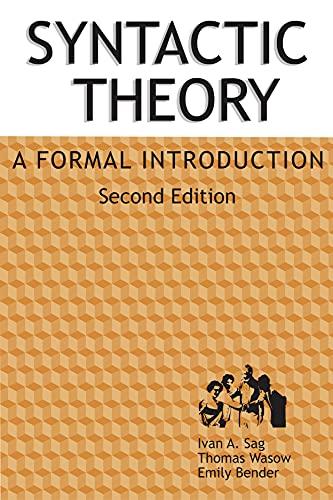

Syntactic Theory A Formal Introduction, 2nd Edition Volume 152 Lecture Notes By

This second edition of Syntactic Theory A Formal Introduction expands and improves upon a truly unique introductory syntax textbook. Like the first edition, its focus is on the development of precisely formulated grammars whose empirical predictions can be directly tested. There is also considerable emphasis on the prediction and evaluation of grammatical hypotheses, as well as on integrating syntactic hypotheses with matters of semantic analysis.The book covers the core areas of English syntax from the last quarter century, including complementation, control, quotraising constructions,quot passives, the auxiliary system, and the analysis of long distance dependency constructions. Syntactic Theorys step-

by-step introduction to a consistent grammar in these core areas is complemented by extensive problem sets drawing from a variety of languages.The books theoretical perspective is presented in the context of current models of language , and the practical value of the constraint-based, lexicalist grammatical architecture proposed has already been demonstrated in computer language applications. This thoroughly reworked second edition includes revised and extended problem sets, updated analyses, additional examples, and more detailed exposition throughout.Praise for the first editionquotSyntactic Theory sets a new standard for introductory syntax volumes that all future books should be measured against.quot Gert Webelhuth, Journal
of Linguistics